Guitar World Verdict
A powerful songwriting and practice tool, the DigiTech Trio+ is an incredibly potent way to supercharge your songwriting. Add in versatile connectivity and generous onboard storage and you’ve got a super option to further your creative endeavours.
Pros
- +
Easy to get up and running
- +
Fantastic songwriting tool
- +
Separate outs for band and loops
- +
Loads of onboard storage space
Cons
- -
Struggles with odd time/key signatures
- -
Band audio quality could be better
You can trust Guitar World
Live looping has come a long way since Robert Fripp’s epic ‘Frippertronics’ performance, with the loop pedal’s journey from an obscure minimalist song creation tool to its mainstream application in rock and pop music being a meteoric rise. While most guitarists have been exposed to the looper as a performance aid via Ed Sheeran, KT Tunstall, and Kurt Vile, it actually has a second useful application, as a practice and songwriting tool.
DigiTech’s Trio+ is a looper pedal as you may well be accustomed to, but it’s also a bassist and drummer in a box. Unlike your band’s drummer the Trio+ never misses a beat, nor does its bassist fluff a note, providing a reliable backing for you to flesh out ideas, practice scales, or even come up with full songs.
DigiTech provided us with a Trio+ for the purposes of this review, so armed with our trusty Telecaster, our backup pedalboard, an audio interface, and our ever-reliable Orange tube amp, we set about putting it through its paces to see if we really could fire our bassist and drummer.
Digitech Trio+ review: Hardware & features
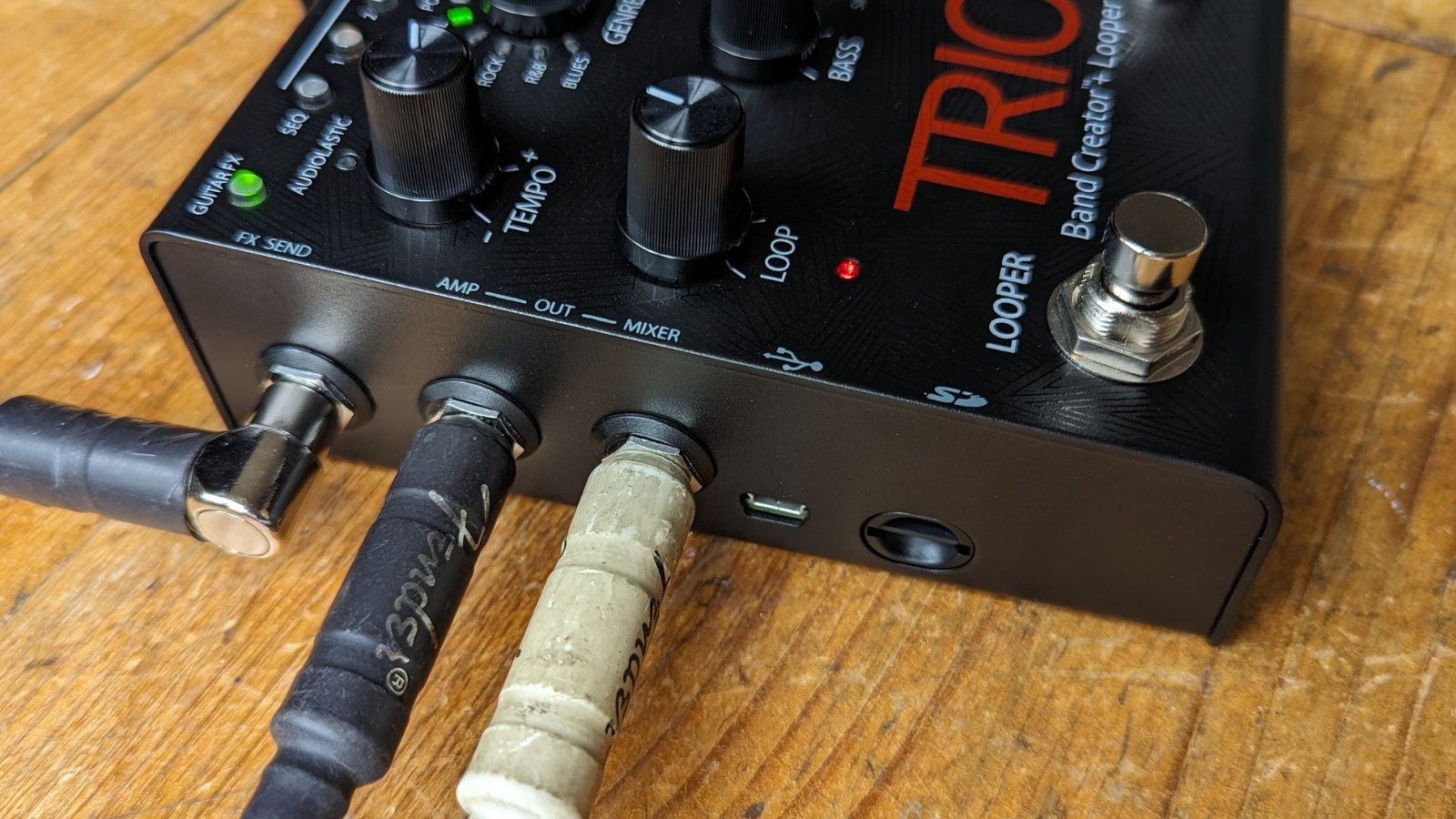
More than just a simple looper, the Trio+ hails itself as a ‘band creator + looper’, so there’s a bit more here than your average stompbox. On the right-hand side, it’s got a guitar input, a control in for an additional footswitch, and the FX return. On the opposite side, there’s the FX send, amplifier out, mixer out, and an SD card slot, which includes a generously sized 32GB Sandisk Micro-SD.
On the front face of the unit, there are six knobs, one for tempo, genre, style, loop, bass, and drums. The genre and style knobs are encoders that gently click into place when you select a setting, with an LED display lighting up in kind so you know where you are. The rest of the knobs act like those you would normally find on a stompbox.
There are separate ‘looper’ and ‘band’ footswitches that offer that nice and quiet feel when you press them, and do a multitude of tasks depending on where you are in the loop or band creation cycle, more on which later. At the top of the pedal, there is a 3.5mm headphone jack and a separate volume knob for direct monitoring.
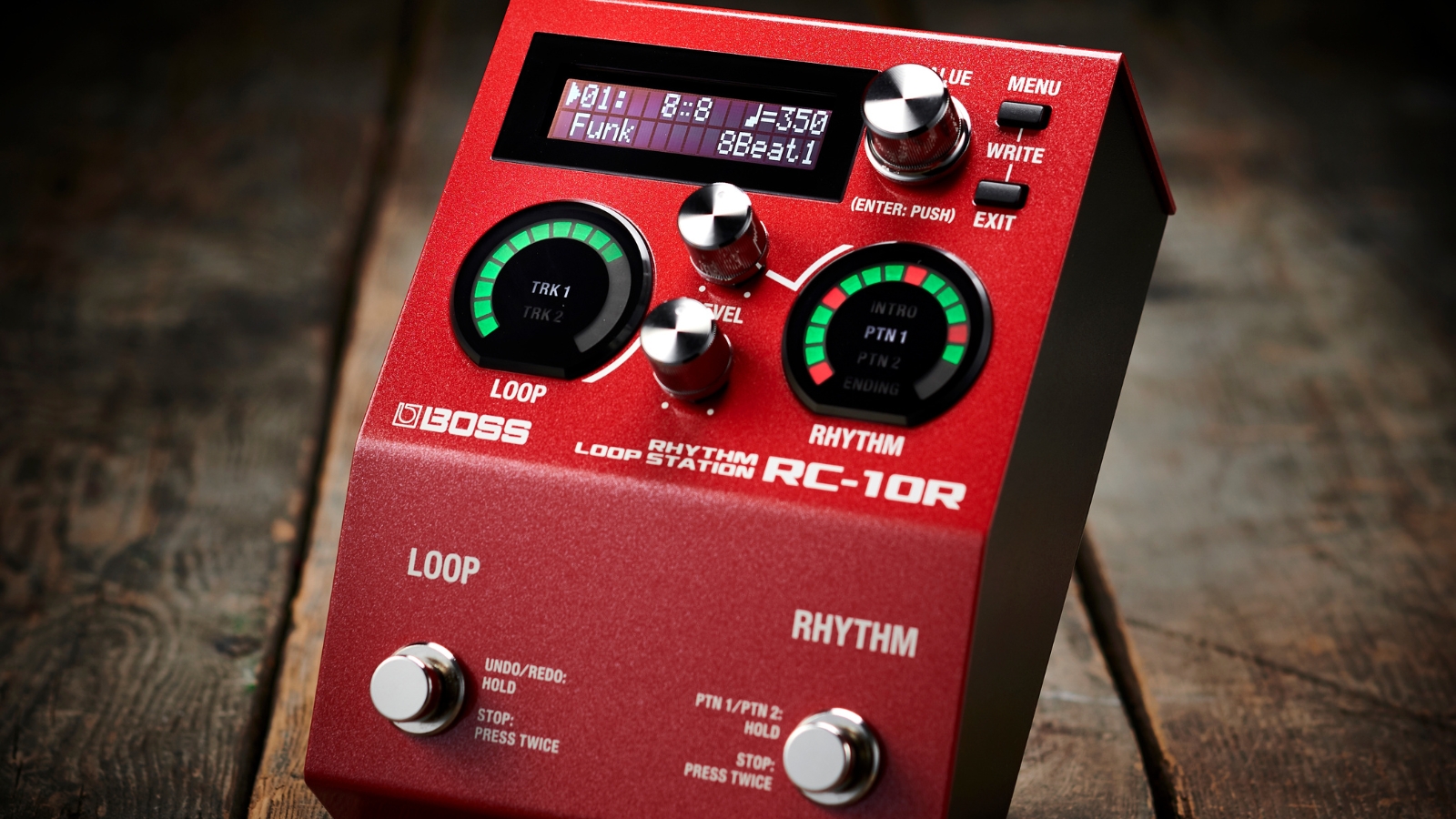
Boss RC-10R Rhythm Loop Station: Another inspirational tool for songwriting, this loop pedal also offers backing tracks, albeit without the bassist the Trio+ gives you.
TC Electronic Ditto X2: If you prefer your looping a little simpler, this excellent pedal from TC Electronic is a powerful tool that's easy to use.
There are also a bunch of buttons to deal with. Along the top of the pedal, you have a guitar fx button, which adds a bit more drive each time you press it. Next is the seq button which gives you the option to play parts of a song in order, and then the individual part buttons for you to record the various stages of your songs, with up to 5 sections available.
Finally, the ‘alt time’ button allows you to half-time or double-time your song parts. There’s the ‘song’ button, which allows you to select stored songs when engaged, or change the style of the backing when disengaged, and a ‘simple bass’ button, which as you can imagine, simplifies the generated bass guitar line.
It’s powered by a 9v 800mA power supply, so you’ll need to daisy chain two outputs if you want to use it with pretty much any pedalboard power supply. Handily DigiTech has included the correct PSU in the box and it comes with a multitude of different plug sockets so you’ll have the right end no matter which country you’re in.
DigiTech Trio+ review: Performance & sound
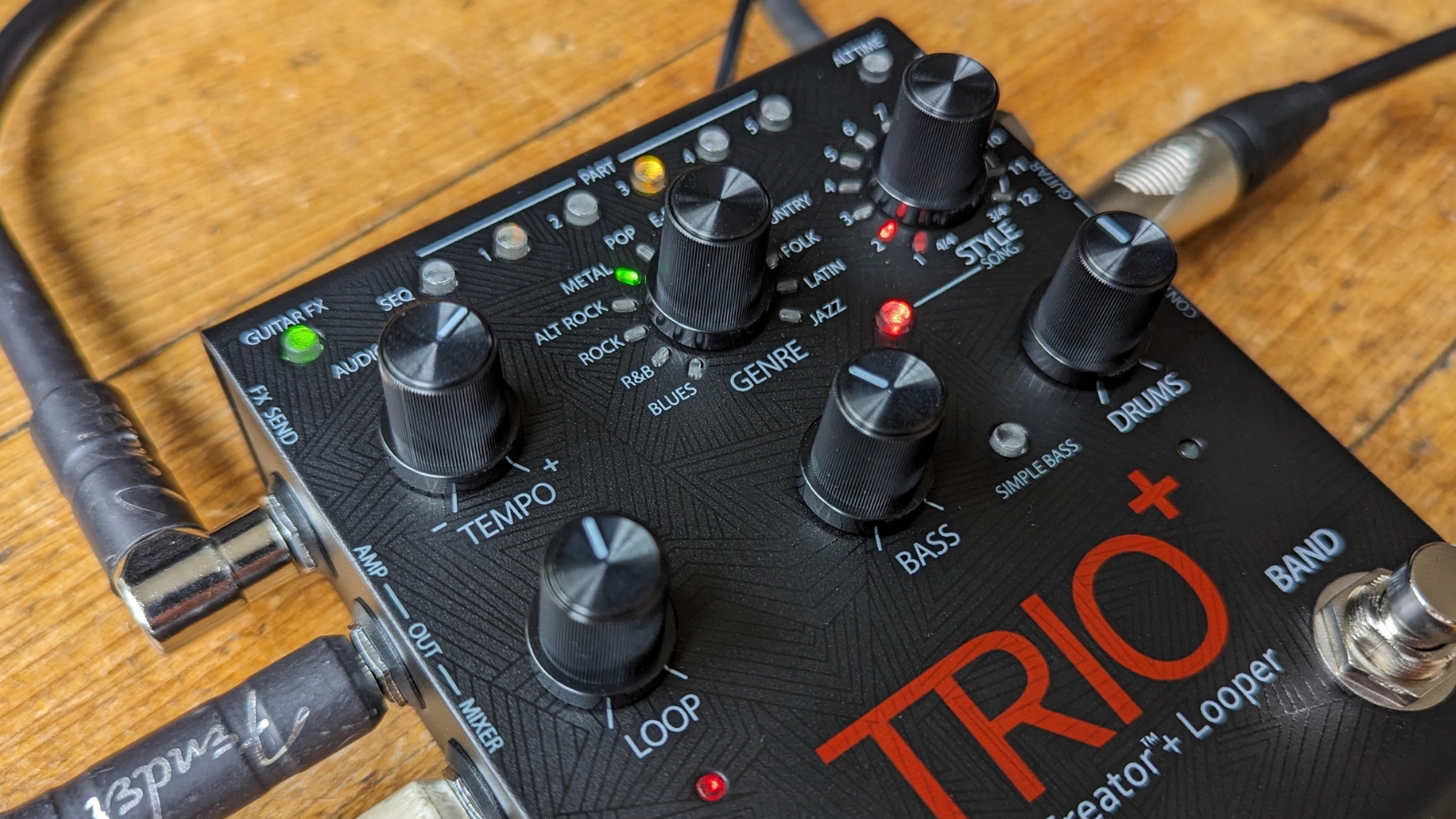
We begin by plugging our guitar in, our pedalboard through the FX sends and with one output to our audio interface and the other to our amplifier. With this set up the ‘band’ will play back through our studio monitors, whilst all our guitar loops will come through the amplifier. You can have everything going to your amp if you wish, but you’ll need to use a clean tone otherwise the bass and drums will get distorted on the drive channel.
We’d recommend having the quick start guide open as we did when using it for the first time, as the Trio+ is not quite as simple as your average loop pedal. We begin by ‘teaching’ the band with a simple G-C-D chord progression. To do this you simply arm the band by pressing the band footswitch and strum your chord pattern with a steady rhythm. Once we complete the chord progression we simply hit the band button again on the first beat and we’re greeted by the sound of bass and drums immediately playing back.
It captures the vibe of the music remarkably well, and you can quickly change the type of music by using the genre knob, with the band adapting instantly whether it’s a Latin rhythm or the double bass drum of some metal, which admittedly sounds pretty weird over our chosen chord progression. The sound of the backing band is pretty good, although it’s certainly not going to convince anyone there’s a real band playing.
Depending on the vibe you’re going for it could work for a solo performance, but for us, the quality isn’t quite there to elevate it beyond a practice tool. The lack of a stereo out means we have to set our audio interface to mono to get a full sound, it’s not a deal breaker by any means but having the band in stereo would be a nice option. There are also no stereo ins or outs for the guitar, so no ping-pong delays or super-wide reverbs either.
Once you get over the initial learning curve, it’s really quite a powerful tool for trying out parts during your songwriting process
The style knob allows you to select a variety of backing tracks within the same genre, so if the initial one doesn’t quite fit what you want, there are plenty of variations. The LEDs light up green if they’re a good match for what you played, or orange if it’s not quite as good. With our band playing, we set to use the looping function, which works pretty much the same as any other looper we’ve encountered. We hit the looper footswitch and the accompanying LED flashes red until the band returns to the start of the phrase, at which point it changes to orange to indicate that it's ready to record.
After much fun looping chords, licks, and other weird noises, we press the band footswitch to stop playback, and then use the part buttons at the top to select the next section. Rinsing and repeating our previous steps, we build up a simple song with a verse-chorus, verse-chorus, and middle 8-chorus structure. By stopping playback you can then select the individual parts using the part buttons, making them higher or lower intensity indicated by a green or red LED. Hit the seq button and the whole song will play back.
Once you get over the initial learning curve - which we'll reiterate is much easier with the quick start guide to hand - it’s really quite a powerful tool for trying out parts during your songwriting process. It’s also fun to just see where the moment takes you, adding and taking away parts as you go. The fact that you can store those bits and come back to them later makes the Trio+ a very powerful tool for practice and in particular, songwriting. Running your effects in the loop is great as well, as you can turn effects on and off to create your song, whether you want a delay and reverb-infused arpeggio or a searing fuzz lead line.
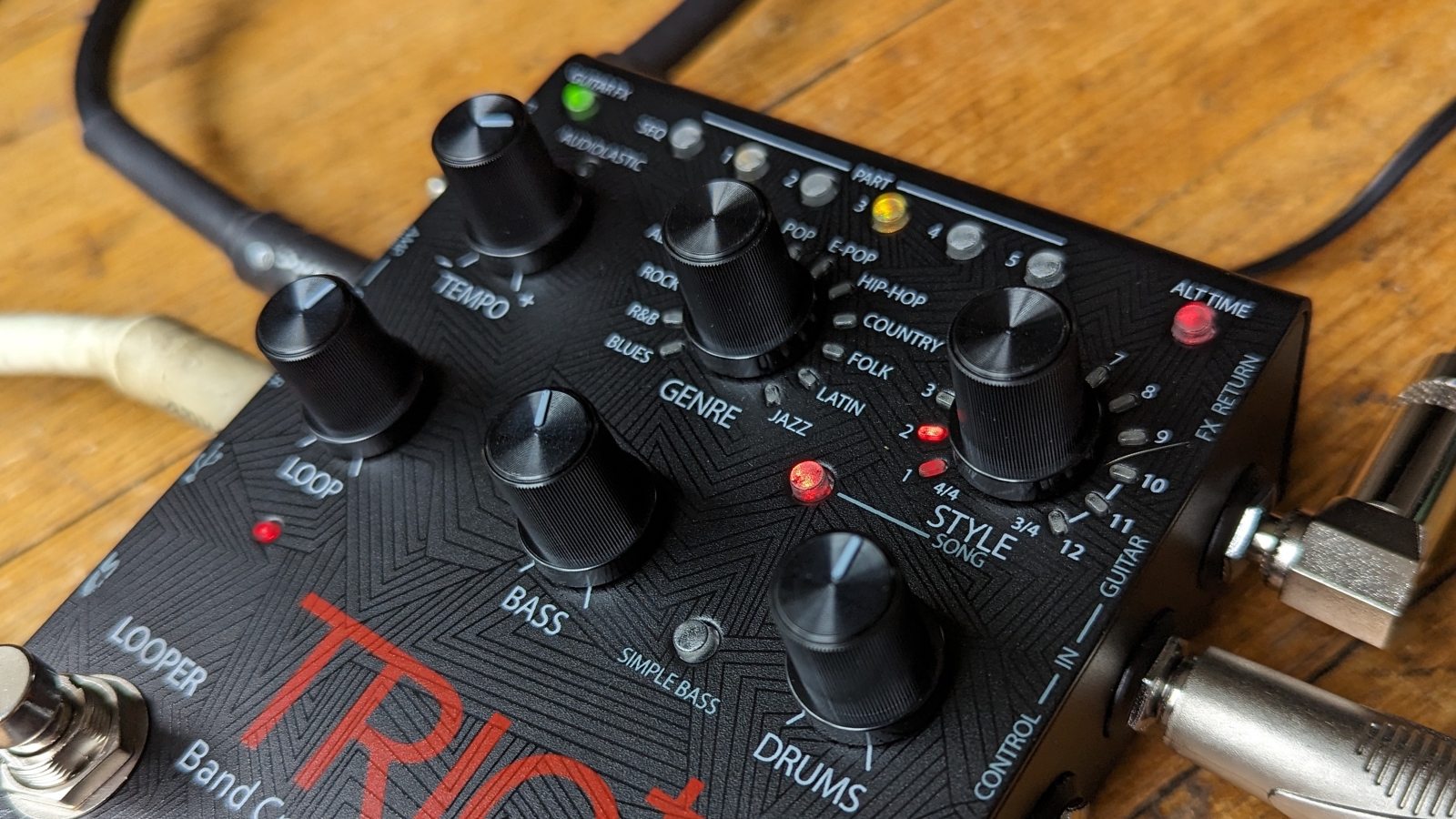
Once our admittedly ‘stock’ sounding G-C-D song was out of the way, we tried something a little more esoteric, with a darker song that shifted from D to D# in 6/4, over which we played some double harmonic scales for that Eastern-inspired sound. We have to admit that the Trio+ coped with it extremely well, providing us with a perfect backing once we’d tweaked the style a bit and taken things down to a half-time feel. It genuinely gave us a bunch of ideas for a new song to take into the practice room that matched the exotic sound of our current band impressively well.
It does silent practice as well too, so it doesn’t matter if everyone’s asleep when inspiration strikes. When you use the headphones out both the band and guitar signal are directed here, and there’s even a basic cabinet emulation for your guitar to make up for the lack of an amplifier. It won’t replace our amp, but does the job of getting basic ideas down.
We did try the Trio+ on some more out-there time signatures and the band definitely struggled when we got into alternate 11/8 and 9/8 territory, but most players aren’t likely to be trying those kinds of songs too often. Another issue we came across was that you can obscure the LEDs with your foot when you're starting, stopping, and clearing loops, which can make it difficult to see which mode you’re in, a potential issue for those who want to use this pedal live.
DigiTech Trio+ review: Verdict
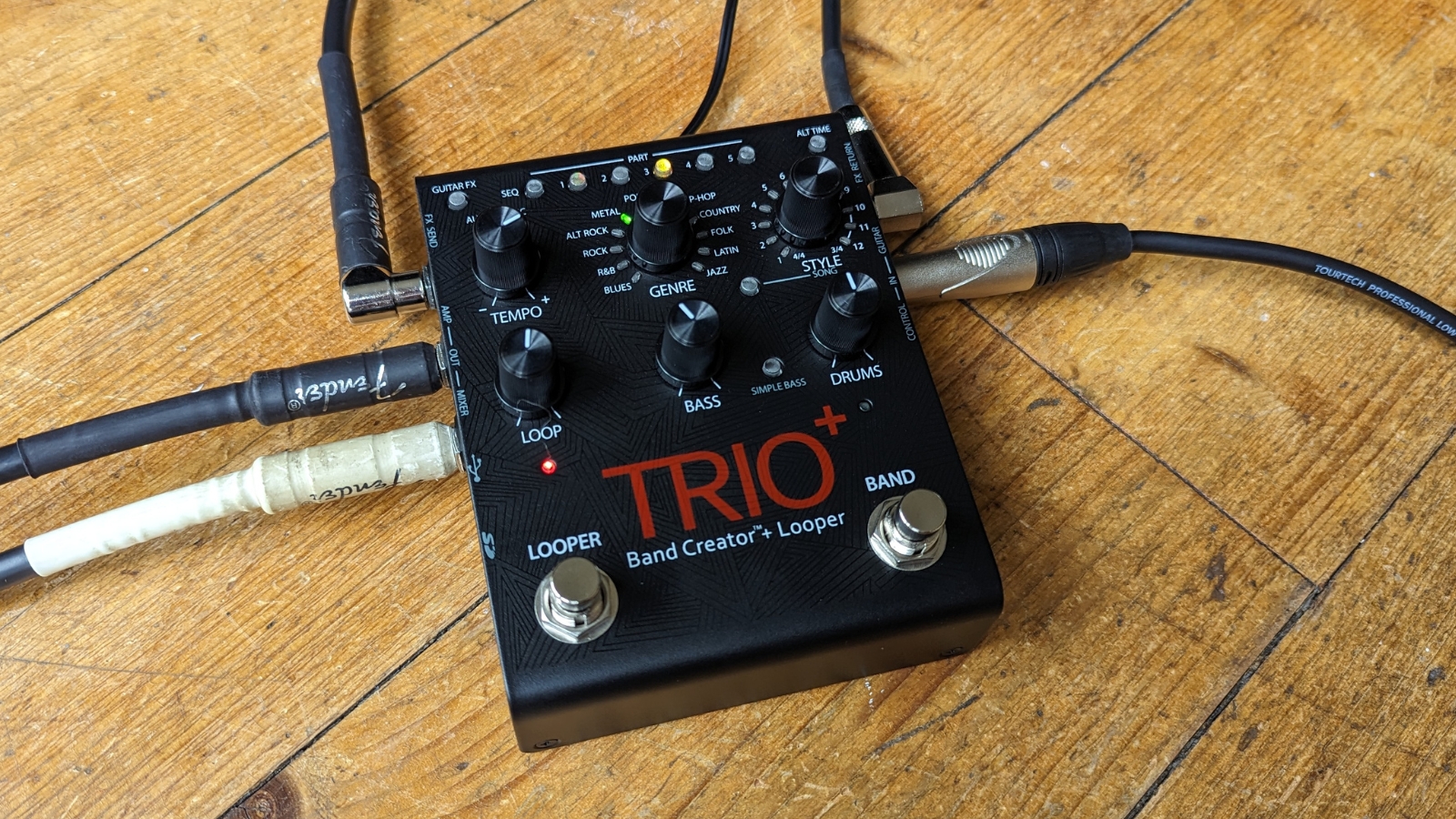
All in all, we absolutely loved the DigiTech Trio+ as a songwriting and practice tool. It’s perfect for taking your ideas from two notes to fully-fledged productions, and the ability to save and export entire song ideas makes it an extremely powerful addition to the songwriter’s arsenal. The flexible range of ins and outs makes it easy to integrate into a variety of setups both at home and for live use.
While we wouldn’t use it for live performances ourselves, this is admittedly our entirely subjective opinion, and we could definitely see people rocking up to solo shows with their songs already programmed and ready to live loop over the top. The initial learning curve is steep, but with the manual at hand we wager you’ll be able to conquer it in half an hour to an hour, and be on your way to full song creation thereafter.
DigiTech Trio+ review: Specs
- Presets: 12 x Styles, 12 x Genre
- Inputs: 1 x 1/4" (instrument), 1 x 1/4" (FX return)
- Outputs: 1 x 1/4" (amp out), 1 x 1/4" (mixer out), 1 x 1/4" (FX send)
- Headphones: 1 x 1/8"
- USB: Mini-B
- Other I/O: 1 x 1/4" (FS3X footswitch)
- Bypass: Buffered
- Storage: Micro SD card (included)
- Power: 9V DC 800mA power supply (included)
- Contact: DigiTech

Matt is a Junior Deals Writer here at Guitar World. He regularly tests and reviews music gear with a focus on guitars, amps, pedals, modelers, and pretty much anything else guitar-related. Matt worked in music retail for 5 years at Dawsons Music and Northwest Guitars and has written for various music sites including MusicRadar, Guitar Player, Guitar.com, Ultimate Guitar, and Thomann’s t.blog. A regularly gigging guitarist with over 20 years of experience playing live and writing and recording in bands, he's performed everything from jazz to djent, gigging all over the country in more dingy venues than you can shake a drop-tuned guitar at.











